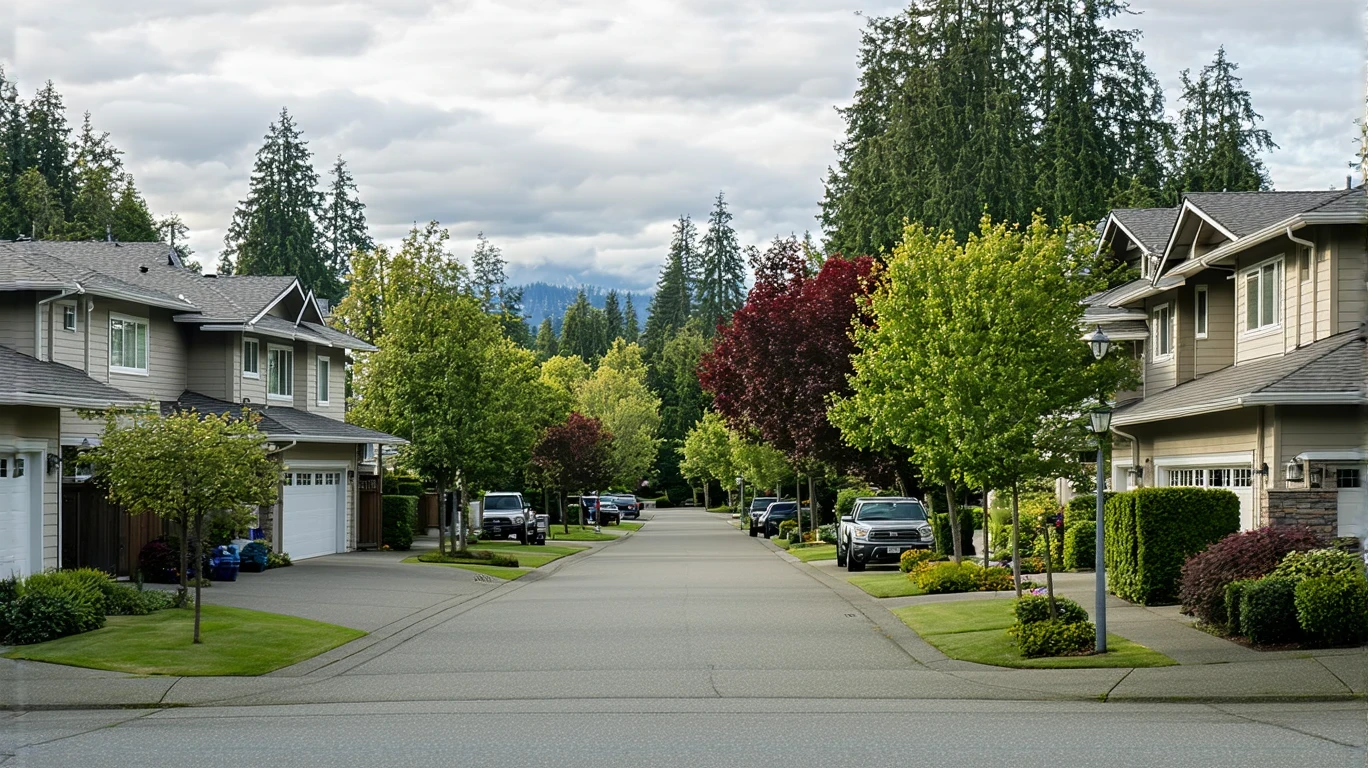Sammamish is considered an expensive Seattle suburb in 2025, with average rent for a 2-bedroom apartment around $2,800 and home prices significantly above the national median.
Living in Sammamish, WA comes at a premium, with costs about 45% higher than the U.S. average. For a couple, a comfortable lifestyle may require at least $6,500 in gross monthly income (before taxes). Let’s break down where that money goes.

Housing Costs in Sammamish
Housing is the biggest expense for most Sammamish residents. Expect to pay around $2,800 per month to rent a typical 2-bedroom apartment. Prices can vary by neighborhood and amenities:
- Klahanie area: $2,600 – $3,200
- Pine Lake: $2,500 – $3,000
- Trossachs: $2,700 – $3,400
Buying a home is even pricier. The median sale price for a 3-bedroom house in Sammamish is around $1.2 million as of 2025. Newer construction in desirable neighborhoods like The Plateau can reach $1.5M+.
Many Sammamish neighborhoods have homeowners associations (HOAs). Typical HOA dues range from $200 – $500 per month. While steep, these fees often include community amenities and events that add to Sammamish’s high quality of life.
Utilities and Monthly Bills
In addition to housing, budget for monthly utilities:
| Utility | Typical Monthly Cost |
|---|---|
| Electricity | $120 – $180 |
| Natural gas | $60 – $120 |
| Water + sewer | $90 – $150 |
| Internet | $60 – $80 |
Utility costs can vary based on home size, usage, and provider. Sammamish’s mild climate keeps heating and cooling costs moderate compared to many parts of the country.
Food and Grocery Expenses
Groceries in Sammamish cost about 15% more than the national average. Expect to spend around $400 per person monthly for a balanced diet, including some dining out.
A gallon of milk runs about $4.50, while a dozen eggs cost $3 – $4. Organic and specialty items can add up quickly. Many residents shop at Safeway, QFC, and Trader Joe’s to balance quality and value.
Taxes and Fees in Sammamish
Washington state has no income tax, but Sammamish residents pay other taxes:
- Sales tax: 10.1% on most purchases
- Property tax: $9.41 per $1,000 of assessed value
- Vehicle fees: Varies, but budget $400+ annually per car for registration, tags, and local transportation benefit district fees
For a $1M home, annual property taxes would be around $9,410. Sammamish’s property tax rate is slightly lower than nearby Bellevue and Redmond.
Sample Monthly Budget for Sammamish
| Expense | Single Person | Couple | Family of 4 |
|---|---|---|---|
| Housing (rent/mortgage) | $2,000 | $2,800 | $3,500 |
| Utilities | $250 | $350 | $500 |
| Groceries and dining | $500 | $900 | $1,600 |
| Transportation | $200 | $400 | $600 |
| Healthcare | $300 | $600 | $1,000 |
| Other expenses and savings | $750 | $1,450 | $2,300 |
| Total Monthly Expenses | $4,000 | $6,500 | $9,500 |
Note that these are approximate pre-tax figures. With Washington’s 0% income tax rate, gross pay and take-home pay are similar. However, always consult a tax professional for your situation.
The Sammamish Lifestyle: Costs vs. Benefits
Living in Sammamish isn’t cheap, but many residents find the costs worthwhile. The city boasts excellent schools, beautiful parks, and a strong sense of community. Commute times to major employers like Microsoft and Amazon are reasonable.
Sammamish offers a variety of housing, from condos and townhomes to luxury estates. Newer construction tends to command top dollar. Some more affordable options exist in older neighborhoods like Timberline and The Crossings, but still expect to pay a premium over most Seattle suburbs.
For many, Sammamish delivers the right balance: a quiet, family-friendly vibe within reach of big-city amenities. But that balance comes at a cost. Budget carefully to ensure Sammamish living aligns with your means and priorities.
Frequently Asked Questions
What salary do you need to live in Sammamish?
To live comfortably, a couple may need a combined gross income of $6,500+ per month ($78,000/year). Families with children should budget more for housing, food, and childcare.
Is Sammamish more expensive than Bellevue?
Overall costs are similar, but Sammamish’s housing prices and property taxes are slightly lower than Bellevue’s. Everyday expenses like groceries and utilities are comparable.
Are there affordable neighborhoods in Sammamish?
Relative to Sammamish’s high cost of living, areas like Timberline and The Crossings offer more modest home prices. However, buying in these neighborhoods still requires a hefty budget by national standards.
How much are HOA fees in Sammamish?
Many neighborhoods have HOAs, with monthly dues typically ranging from $200 to $500. Fees often cover amenities and community events. Review the specifics before buying in an HOA neighborhood.
What’s the most expensive part of living in Sammamish?
Housing is the biggest cost, whether renting or buying. Sammamish home prices are about double the national median. Expect to spend 30% or more of your income on housing.
Is Sammamish a good place to retire?
Sammamish can be a great place to retire if you have a robust nest egg and value the area’s natural beauty, amenities, and community feel. However, those on a fixed income may find it pricey.
How do Sammamish property taxes compare to other cities?
Sammamish’s property tax rate of $9.41 per $1,000 of assessed value is lower than Bellevue ($9.54) and Redmond ($9.52) but higher than the national average. With Sammamish’s steep home values, annual property tax bills can be substantial.
